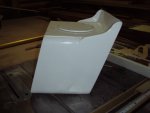fisheymikey
Chief Petty Officer
- Joined
- Jul 30, 2012
- Messages
- 450
well i have been spending many hours looking for some correct info but cant seem to get a real responce or plans.
i have a buddy that is a master welder and also has to his disposal many different enginers to assist with the build.
My question is for the 125 1988 weighs about 300pounds. i measured the engine is at 12 degree angle.and want it about 16-18 inch back.
does anyone have done or has some schematics for thinkness or what kind of materials i should use
boat is a 18.5 cc trophy 1988
any help would be great
thanks
i have a buddy that is a master welder and also has to his disposal many different enginers to assist with the build.
My question is for the 125 1988 weighs about 300pounds. i measured the engine is at 12 degree angle.and want it about 16-18 inch back.
does anyone have done or has some schematics for thinkness or what kind of materials i should use
boat is a 18.5 cc trophy 1988
any help would be great
thanks




















